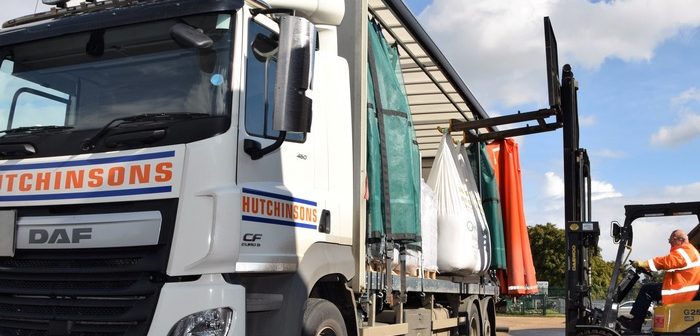Following a notable increase in the demand for urea fertiliser ahead of the 2023 season, leading agronomy firm Hutchinsons is reminding growers to ensure they store and handle it correctly.
Strict regulations govern the transportation and storage of all fertilisers, and the firm’s fertiliser and crop nutrition specialist Rob Jewers says farmers must be careful to abide by these rules, particularly when storing both urea and ammonium nitrate products.
Urea is relatively inert compared with AN, but he warns that regulations prohibit the two from being transported or stored together. Failing to follow the appropriate storage guidelines could risk farmers failing ACCS or Red Tractor inspections, not to mention increasing the risk of significant losses in the event of an incident.

Rob Jewers
“Urea has been more competitively priced than ammonium nitrate this year, by quite some margin. One kilo of AN nitrogen was priced at around £2.60 at the end of September, whereas a kilo of urea nitrogen worked out to be about £1.90, so we have seen more demand for it.
“There may well be farmers who haven’t bought urea before, or haven’t used it for a long time, that perhaps aren’t aware the two [AN and urea] shouldn’t be stored together. It is something to think about, otherwise you might be in for a shock if there’s an ACCS inspection.”
The reason urea and AN cannot be stored or transported together is not because there is a danger of them spontaneously reacting with each other and causing a problem, more the fact that urea is an organic material that acts as a carbon source – CO2 produced in the Haber-Bosch process gets added back into the ammonia to produce urea.
“So, if there was an incident with the ammonium nitrate, such as fire, the urea would provide an additional fuel source,” he explains.
This is why the two products cannot be put on the same vehicle when being delivered to farms, and ideally they should not be stored in the same shed, he says. If they do have to be kept in the same building, guidelines suggest leaving at least a 5 m gap between any urea and AN fertiliser bags.
Other principles of safe fertiliser storage apply equally to all nitrogen fertiliser products, including:
- Store fertiliser in a cool, dry, well ventilated place, out of direct sunlight
- Preferably store it out of public view in a secure (lockable) shed
- Ensure correct signage is in place on buildings
- Do not store fertiliser alongside other potential fuel sources (e.g. hay, straw, diesel, wooden pallets, etc)
- Ensure the surface is level and free from any objects that could puncture bags
- Do not store bags more than three high
- Leave at least 1-2m between fertiliser bags and any parked machinery
- Avoid using potential sources of ignition near fertiliser (e.g. naked flames, smoking, welding/ grinders)
- Follow the National Counter Terrorism Security Office (NaCTSO) Fertiliser Security Five Point Plan (see box).
Mr Jewers notes that urea fertiliser can be slightly more prone to drawing moisture from the atmosphere than AN, but this is generally prevented by keeping bags in the correct storage conditions and taking care to avoid damaging bags when moving or storing them.
He also points out that urea is a bulkier product than AN, so growers who have not used it before should factor this in when assessing storage space requirements.
Five point plan for the storage and security of fertilisers
- Wherever possible use a Fertiliser Industry Assurance Scheme (FIAS) approved supplier
- Wherever possible keep in a secure area, such as a building, or sheeted away from public view
- Carry out regular stock checks and report any loss to the police immediately (call 101)
- Avoid leaving fertiliser in a field overnight – never leave fertiliser in a field for a long period of time
- Remember it is illegal to sell ammonium nitrate without the correct documentation.
The NaCTSO Fertiliser Security Five Point Plan has been endorsed by the Agricultural Industries Confederation (AIC – FIAS), NFU and NFU Scotland, Assured Food Standards (Red Tractor), DEFRA and the HSE.




